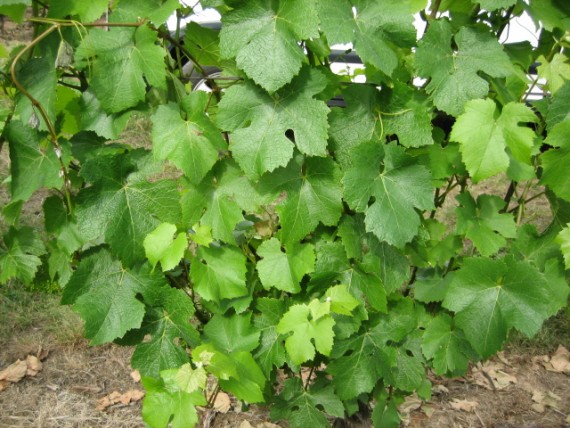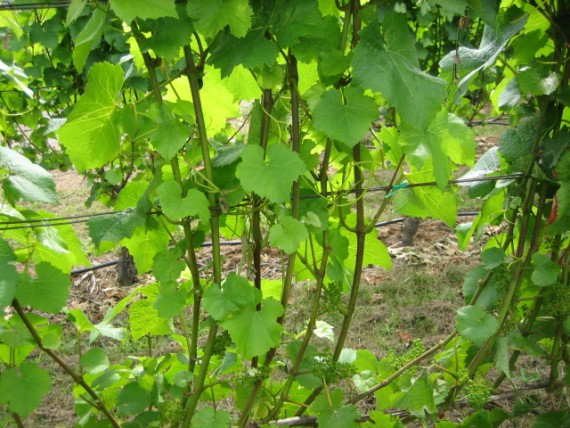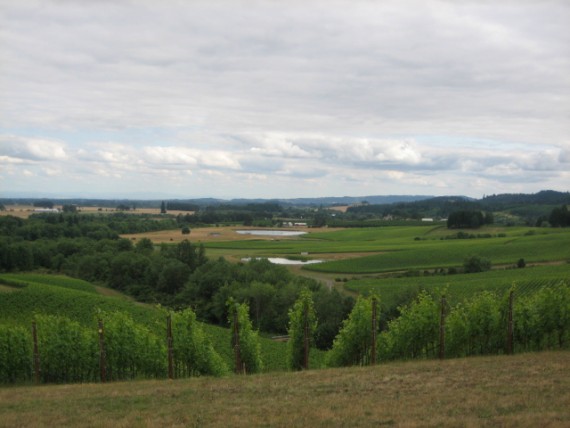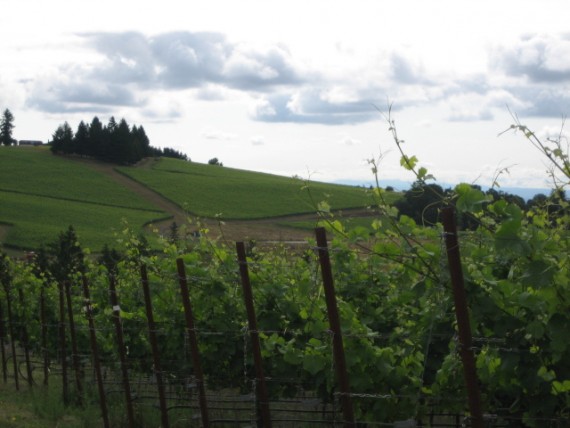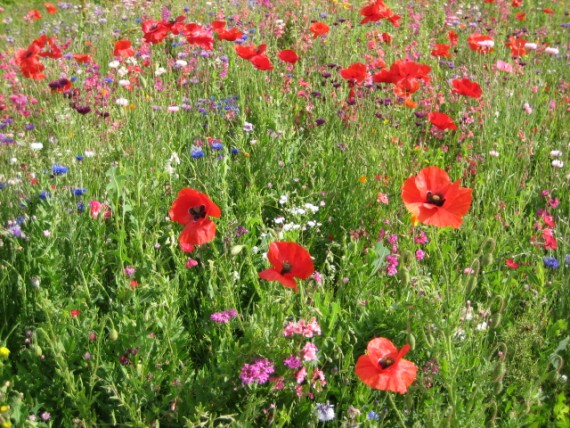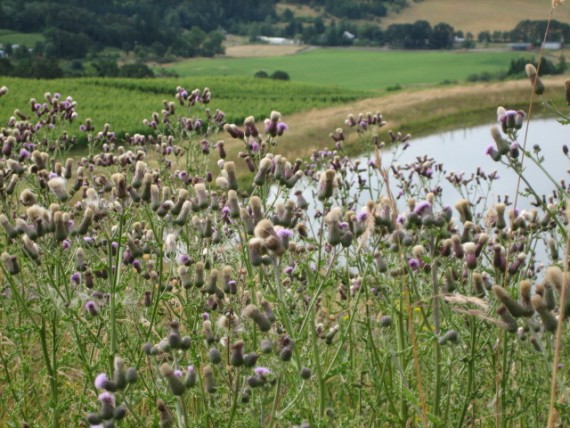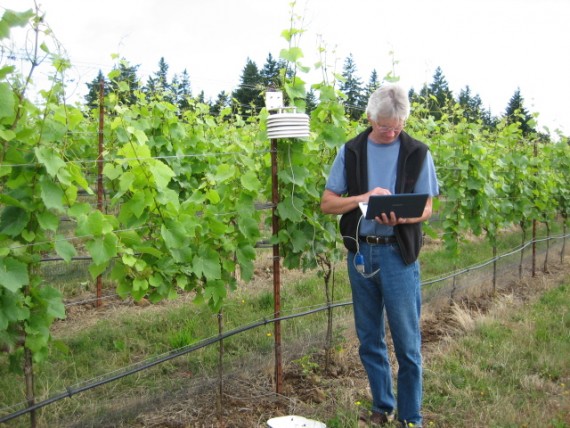So, what does this mean, the latest (or in the case of France, the earliest) harvest ever? The season of the grapevine is like that of any other plant. Certain conditions, in this case soil temperature, set off a chain of physiological events, kicking off the annual cycle of the plant. This year 2011, we have had a cool, wet spring (as we did in 2010) followed by a VERY mild early summer. This past weekend, the final weekend of July, we had a string of days with temperatures from the high 70’s to the low 80’s, clear, low humidity, and a very slight breeze. Perfect grape growing weather. But this weather should have started a month earlier. Coupled with a cool spring and therefore a late bud break (first signs of new life) the whole cycle runs tardy. For Oregon this means harvest (there is a formula that predicts harvest based on the flowering portion of the cycle, when the actual berries are fertilized and formed) should start around the last week in October and finish around the end of November. One should assume that around that time of the year we will have lower temperatures and rain. So, can anything be done to facilitate earlier ripening?
Sadly, not much. Solid heat for as long as possible is very important to staying on track and maybe pushing things along a day or two. When the temperature is too high, over 95-98 ambient degrees the leaf surface is well over 100 degrees. The vine realizes that it is expelling liquid faster than it can possibly find replacement H20 and the vine literally shuts down. Hot weather is not an opportunity to play catch up.
One technique that is frequently used however is leaf pulling or leaf removal. Leaves on the east or morning side of the plant are stripped from the fruiting area that lines up along the lower catch wire. This exposes the front side of the cluster to greater sunlight and opens the foliage to help lower any mildew pressure by allowing breezes to pass through the canopy. This measure does not come without its potential of a downside however, most notable is berry susceptibility to sunburn if there is a heat wave. In my experience the birds seem to find these exposed berries a little more quickly as well.
So what do we do? Drink a little rosé, do a sun dance, hit the river, and prepare for a late, potentially wet season. Up until now, 2010 was the coolest vintage in history. The reds are bursting with red/blue fruit backed by ripe tannins and juicy acid. The whites are simply spectacular: bright stone fruit flavors sparkling with racy acidity. Another glass of rosé please.

